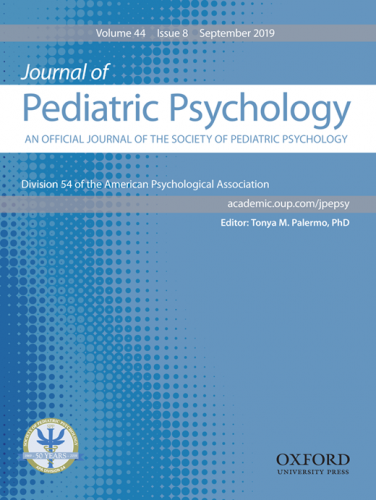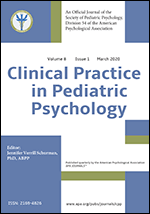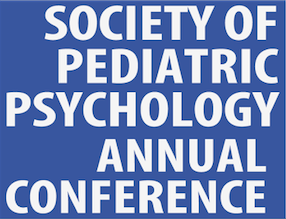Fact Sheet: HIV/AIDS in Children and Adolescents
The human immunodeficiency virus (HIV) is a retrovirus that attacks vital cells in the immune system and is transferred through specific bodily fluids (i.e., blood, semen, pre-seminal fluids, vaginal fluids, rectal fluid, and breast milk). Transmission may occur via unprotected sex, sharing needles, during pregnancy, during child birth, and through breast feeding. AIDS (acquired immunodeficiency syndrome) is the most advanced stage of HIV infection, resulting in failure of the immune system to fend off opportunistic infections.
Prevalence and Course
Just under 1 million people in the United States were living with HIV at the end of 2016, of those, <1% were children or adolescents (≤19yo); however, with the inclusion of older adolescents/young adults (20-24yo) the prevalence rate increases to 4%. The rate of diagnosis in the United States has decreased for ≤19yo due, in part, to a <1% chance that a child will become infected by his/her HIV-infected mother if she is taking antiretroviral medication. The rate of diagnosis has remained stable for 20-24yo. The highest prevalence rate is among Black/African American individuals (42%). The most common route of transmission is through unprotected anal and vaginal sex. With improved treatment, HIV mortality rates have decreased and lifespan expectancy has increased; however, HIV is a chronic, life threatening disease and treatment is life-long. When antiretroviral medications are taken as prescribed, it is possible for the HIV virus to be suppressed to an “undetectable” level, preventing the sexual transmission of HIV. The Prevention Access Campaign promotes the Undetectable = Untransmittable (U=U) message to help end HIV transmission and HIV-related stigma. Antiretroviral medication (pre-exposure prophylaxis, PrEP and post-exposure prophylaxis, PEP) can also be used to prevent the acquisition of HIV (CDC HIV Surveillance Report, 2017).
Health and Psychosocial Consequences
HIV-infected youth experience increased risk for dysfunction in multiple systems (e.g., renal, GI), opportunistic infections, and cognitive deficits. They may also experience a high level of stress from demanding treatment regimens (daily medication, multiple medications, large pills), stigma associated with the disease and acquisition, and deficits in social support, particularly when one’s status may be undisclosed. Youth with HIV may also experience increased disruption in mood and symptoms of anxiety, grief related to the loss of loved ones (parents or siblings) due to infection, and other contextual and environmental factors that place children at higher risk (Elkington et al., 2011).
Evidence-based Assessment
Since HIV/AIDS can impact cognitive functioning, standardized cognitive and neuropsychological assessment is important to monitor disease effects and assist in academic planning. In addition, assessment of mood and anxiety is important to address any psychological difficulties associated with living with HIV/AIDS. Substance use and abuse, as well as high-risk sexual behavior, are also important to monitor.
Culture, Diversity, Demographic and Developmental Factors
HIV disproportionately affects African American and Latino youth and young men who sleep with men and/or identify as bisexual. Young African American heterosexual women also represent one of the fastest growing groups. Perinatally infected children who have lived with HIV longer are at higher risk for negative consequences (increased physical and mental health problems) versus older behaviorally-infected youth. Younger children are also more dependent on caregivers for treatment adherence. As children age, caregiver involvement tends to decrease despite the ongoing need for support. Decreased support tends to become even more pronounced as youth transition to the adult healthcare system where care coordination and more intensive support may be less available. Since HIV is a chronic illness, transition of services from pediatric to adult care has become an important issue (Philbin et al, 2017).
Evidence-based Interventions
Given the treatment demands to maintain optimal virus suppression, adherence represents a primary intervention target. Adherence strategies include intensive youth-focused case management and behavioral interventions that provide reminders and reduce treatment-related anxiety. Addressing HIV-related stigma (e.g., societal, internalized) is also a key intervention point, as stigma is often a barrier to health engagement. Therapeutic support and problem-solving approaches can address psychosocial, mood and anxiety issues that can impact adherence. Peer support groups are also an effective intervention.
Resources
- https://www.hiv.gov/hiv-basics/staying-in-hiv-care/other-related-health-issues/mental-health
- https://www.cdc.gov/hiv/
- https://www.thebody.com/
- https://aidsinfo.nih.gov/understanding-hiv-aids/fact-sheets/27/92/hiv-and-mental-healthhttps://www.nimh.nih.gov/health/topics/hiv-aids/index.shtml
Authors: Donna Marschall, Ph.D., Yaphet Bryant, Ph.D.
Date of last update: November 2019
References
- Centers for Disease Control and Prevention. HIV Surveillance Report, 2017; vol. 29. http://www.cdc.gov/hiv/library/reports/hiv-surveillance.html. Published November 2018. Accessed May 31, 2019.
- Elkington, K.S., Robbins, R.N., Bauermeister, J.A., Abrams, E.J., McKay, M., & Mellins, C.A. (2011). Mental health in youth infected and affected by HIV: the role of caregiver HIV. Journal of Pediatric Psychology, 36(3), 360-373.
- Philbin, M.M., Taner, A.E., Ma, A., Chambers, B.D., Ware, S., Kinnard, E.N., Hussen, S.A., Lee, S., Fortenberry, D. (2017). Adolescent and adult HIV providers’ definitions of HIV-infected youths’ successful transition to adult care in the United States. AIDS Patient Care and STDs, 31(10),421-427.



